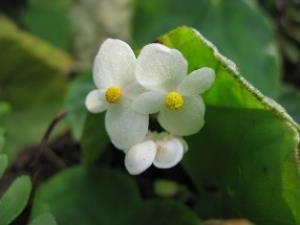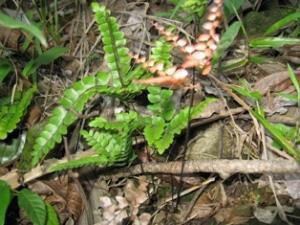Annisa Satyanti
This project aims to provide information on Ciampea limestone flora threatened by quarries. The information of flora, abundance, and characteristics will be able to serve in further restoration effort.

New species of Begonia found in Ciampea Limestone Hill.
Limestone karst is a unique ecosystem containing high level of species endemism. Many mining and quarries activities are found on limestone hills in Ciampea, Bogor. It is important to identify flora losses due to presence of quarries as it will encompass endemic species that is able to adapt to such system and further indicate specific plant species that can be employed for restoration. Site-endemic species face the greatest extinction risk when a karst is completely quarried, e.g. Zeuxine tjiampeana that is confirmed to be endemic by Comber (1990) to a limestone mountain in Ciampea. In addition, very limited study has been carried out for limestone karst vegetation, particularly in Java, which is vulnerable to intensive anthropogenic activities and urban development. A limestone species might not be included as endangered species and protected without assessment study. A study on limestone karst system plant diversity would help increasing biodiversity protection and maintain natural landscape.

Climbing fern found in Nyungcung Hill.
These would be covered by the following main activities:
i) collecting data and identifying plant species and microhabitat;
ii) listing endemic, rare, and key plant species and collection for ex-situ conservation;
iii) identifying potential native species for restoration. For the vegetation analysis, first step is to determine minimum plot size and number to be established for quarried and non-quarried area. Plant identification and microhabitat data recording is the subsequent step to be taken.
Furthermore, keystone species and endemic species will be collected for ex-situ conservation in Bogor Botanic Garden. In-house research will be conducted for selected plant to appoint them as species potential for restoration. Results will be presented in scientific papers and poster, as well as in stakeholder consultation meeting. Dissemination of results carried out together with students’ organizations, government office, and NGOs is expected to enhance public awareness and knowledge about the importance of nature and biodiversity protection.